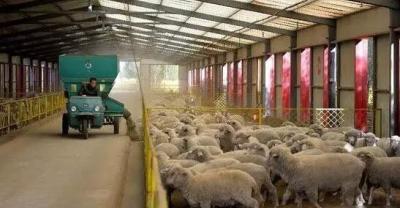Rural aquaculture technology? senior farmers summed up seven points for attention in crayfish culture in 2018

Two days ago in the daily lecture hall published a "farming technology? what do you need to pay attention to in raising crayfish in rural areas in spring?" How to breed without losing money "(click to read this content), everyone's response is very good, a friend backstage private message asked me to share some more, then here today to share 7 successful crayfish farming methods.
The most suitable growth temperature of freshwater crayfish is above 18 ℃ and below 30 ℃, but when the water temperature is lower than 5 ℃, it will frostbite and die, resulting in loss. At the bottom of the article, we will talk about how to make the crayfish safely through the winter when it is cold.

Complete works of how to breed crayfish scientifically
First, pond weeds.
Grass is very important for shrimp and crabs. As the saying goes: "crab size, look at water plants", "how many shrimp, look at water plants". "how about lobster? is there any grass in the pond? The lobster is not big, but the grass in the pond is in charge. " Aquatic plants, in lobster culture, play an important role. First, aquatic plants can fill the insufficient intake of lobster bait and supplement a large number of vitamins; second, they can prevent wind and waves, absorb some harmful substances in the water body, purify water quality, and balance the water environment; third, it can provide shelter and habitat for young shrimp and shelled shrimp to reduce bullying. Generally speaking, the planting area of aquatic plants accounts for half of the total area of the pond. Varieties are available: low-stem Reed, Zizania caduciflora, Elodea verticillata, etc. If possible, you can also put some empty cans, bamboo tubes, tree roots and other wastes at the bottom of the water body, which are crayfish's favorite habitats.
Second, stocking density.
Some people who have never raised crayfish think that the more they breed, the better, and some of them will die. In fact, this is not the case, lobster stocking density is too high, it is easy to cause rapid deterioration of water quality, lack of oxygen on grass, a large number of grass is cut off, lack of bait to kill each other.
According to 100 tails / Jack, 10000 tails / mu, 100jin / mu. It doesn't matter if you have more and less, as long as there is little difference.
The third feeding time.
Generally, it is fed twice, once in the morning and once in the evening. Generally, the amount of feeding in the evening accounts for 80% of the whole day. The feeding amount should be determined according to water temperature, eating condition of shrimp, weather, specification (size, growth period), stocking density, water quality, season, etc.
It is suggested that it is best to set up a bait table beside the shrimp pond in order to observe the feeding situation and avoid the killing of insufficient food and the waste of food, not to mention polluting the water quality. It is generally appropriate to finish eating in about 2 hours.
Disinfection of the fourth pond
Pond cleaning disinfection can effectively kill enemy organisms in the pond (catfish, Loach, snakehead, snake, rat, etc.), wild miscellaneous fish (common carp, crucian carp, etc.), and pathogens. Quicklime and bleach can be used, which is economical, economical and safe. The specific operation methods are as follows: 1. Sterilized with quicklime. Dry disinfection: 70 kilograms of quicklime per mu, sprinkle the whole pool with chemical water, and then hug with nail rake if possible, after a week in the pond, inject new water; disinfect with water: the surface of each mu is calculated according to the water depth of 1 meter, and 130 kilograms of quicklime is dissolved in the water. Sprinkle evenly in the whole pool. two。 Disinfect with bleach. After the bleach containing 30% available chlorine was completely dissolved, the whole pool was evenly sprinkled with a dosage of 25 kg per mu.
Fifth regular fertilization
Some people think that it doesn't matter whether the lobster is fertilized in the pond or not. in fact, applying an appropriate amount of organic fertilizer to the shrimp pond to cultivate bait organisms can directly provide natural bait for the shrimp after entering the pond. 400 kg / mu of fermented organic fertilizer was selected to maintain the corresponding fertility of the pond water. In the process of feeding, with the gradual deepening of the water level, to apply mature organic fertilizer, the amount and time should be determined according to the fat and thin of the water, generally not more than 80kg each time. The transparency of the pool water is kept at about 35 cm. Sixth scientific stocking
According to the current crayfish culture technology, shrimp seedling release mainly includes three stages: one is to release autumn seedlings, commonly known as "planting shrimp"; the second is spring seedlings, commonly known as "spring shrimp seedlings"; and the third is summer replenishment. The seventh choice of feed
Lobster is omnivorous, animal feed, plant feed and all kinds of artificial feed should be used in different stages. Animal feed mainly includes small fish chips, dried fish meal, snail clam meat and all kinds of animal offal, while plant feed mainly includes rapeseed cake, soybean meal, wheat, corn, pumpkin and all kinds of vegetables and upland grass.
Finally, let's talk about how the cold weather can make the crayfish safely through the winter. What are the problems to be solved by shrimp seedlings during the winter?
In most areas, there has been rain and snow accompanied by strong winds, accompanied by pond icing, resulting in low water temperature or lack of oxygen in some ponds. Some shrimp seedlings have hatched out of the hole, if not managed properly, it may cause mass death of crayfish. First, adjust the water temperature by using water level plants.
The water level can be determined according to the weather. On a sunny day, the water level can be controlled at about 1.5 meters, allowing the temperature to raise the water. In continuous rainy weather, raise the water level at the right time and maintain the temperature of the water body. It should be noted that the water level is dry in winter and the water level should be kept stable as far as possible. Plant cold-resistant submerged plants such as Eloe grass, grass, evergreen bitter grass, and so on, to increase the temperature at the bottom of the water. Second, adjust the water temperature by biological fermentation
Microbes at the bottom of the pond can also raise the temperature of the water when they ferment. At this time, a small amount of farm manure can be used appropriately, or straw can be piled up in the pond to promote biological fermentation at the bottom of the pond.
Click on the daily lecture hall avatar, follow, get more content, and leave us a message.

- Prev

Cymbidium four-season breeding methods, each season breeding requirements are different
Flowering must be timely establishment of flower stems Cymbidium is now seen in the flower market more potted plants, but also a lot of flower friends like varieties. Cymbidium is more...
- Next

How should wood fragrant flowers be cultivated and cultivated? Cultivation and Culture techniques of Mushroom Flower
Muxiang flower is a kind of flower that sounds very gentle no matter its name or appearance. It has high horticultural value. Its root can also be used as traditional Chinese medicine.
Related
- On the eggshell is a badge full of pride. British Poultry Egg Market and Consumer observation
- British study: 72% of Britons are willing to buy native eggs raised by insects
- Guidelines for friendly egg production revised the increase of space in chicken sheds can not be forced to change feathers and lay eggs.
- Risk of delay in customs clearance Australia suspends lobster exports to China
- Pig semen-the Vector of virus Transmission (4)
- Pig semen-the Vector of virus Transmission (3)
- Five common causes of difficult control of classical swine fever in clinic and their countermeasures
- Foot-and-mouth disease is the most effective way to prevent it!
- PED is the number one killer of piglets and has to be guarded against in autumn and winter.
- What is "yellow fat pig"? Have you ever heard the pig collector talk about "yellow fat pig"?

